Nick Haber
3D-Generalist: Self-Improving Vision-Language-Action Models for Crafting 3D Worlds
Jul 09, 2025Abstract:Despite large-scale pretraining endowing models with language and vision reasoning capabilities, improving their spatial reasoning capability remains challenging due to the lack of data grounded in the 3D world. While it is possible for humans to manually create immersive and interactive worlds through 3D graphics, as seen in applications such as VR, gaming, and robotics, this process remains highly labor-intensive. In this paper, we propose a scalable method for generating high-quality 3D environments that can serve as training data for foundation models. We recast 3D environment building as a sequential decision-making problem, employing Vision-Language-Models (VLMs) as policies that output actions to jointly craft a 3D environment's layout, materials, lighting, and assets. Our proposed framework, 3D-Generalist, trains VLMs to generate more prompt-aligned 3D environments via self-improvement fine-tuning. We demonstrate the effectiveness of 3D-Generalist and the proposed training strategy in generating simulation-ready 3D environments. Furthermore, we demonstrate its quality and scalability in synthetic data generation by pretraining a vision foundation model on the generated data. After fine-tuning the pre-trained model on downstream tasks, we show that it surpasses models pre-trained on meticulously human-crafted synthetic data and approaches results achieved with real data orders of magnitude larger.
CogGen: A Learner-Centered Generative AI Architecture for Intelligent Tutoring with Programming Video
Jun 25, 2025Abstract:We introduce CogGen, a learner-centered AI architecture that transforms programming videos into interactive, adaptive learning experiences by integrating student modeling with generative AI tutoring based on the Cognitive Apprenticeship framework. The architecture consists of three components: (1) video segmentation by learning goals, (2) a conversational tutoring engine applying Cognitive Apprenticeship strategies, and (3) a student model using Bayesian Knowledge Tracing to adapt instruction. Our technical evaluation demonstrates effective video segmentation accuracy and strong pedagogical alignment across knowledge, method, action, and interaction layers. Ablation studies confirm the necessity of each component in generating effective guidance. This work advances AI-powered tutoring by bridging structured student modeling with interactive AI conversations, offering a scalable approach to enhancing video-based programming education.
From Replication to Redesign: Exploring Pairwise Comparisons for LLM-Based Peer Review
Jun 12, 2025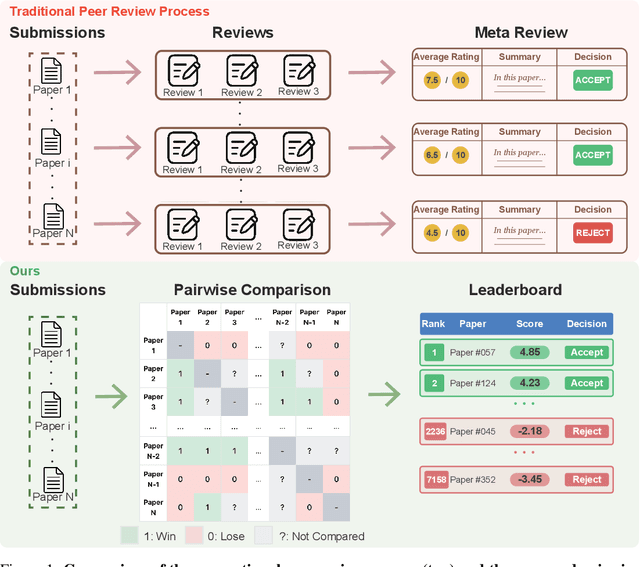

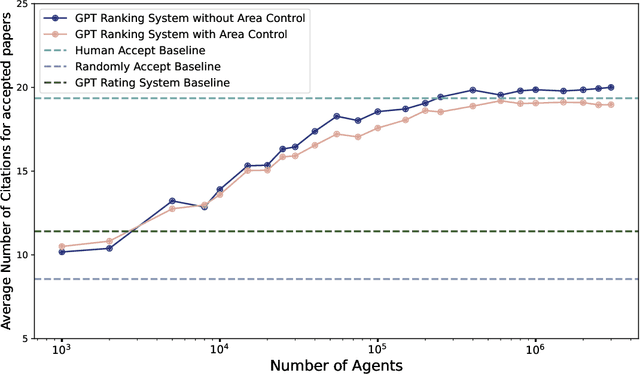
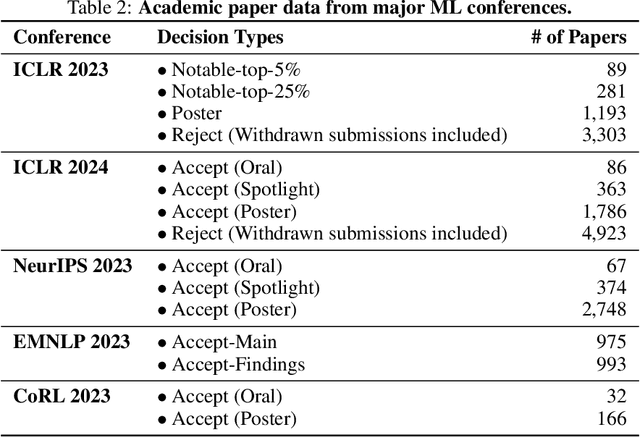
Abstract:The advent of large language models (LLMs) offers unprecedented opportunities to reimagine peer review beyond the constraints of traditional workflows. Despite these opportunities, prior efforts have largely focused on replicating traditional review workflows with LLMs serving as direct substitutes for human reviewers, while limited attention has been given to exploring new paradigms that fundamentally rethink how LLMs can participate in the academic review process. In this paper, we introduce and explore a novel mechanism that employs LLM agents to perform pairwise comparisons among manuscripts instead of individual scoring. By aggregating outcomes from substantial pairwise evaluations, this approach enables a more accurate and robust measure of relative manuscript quality. Our experiments demonstrate that this comparative approach significantly outperforms traditional rating-based methods in identifying high-impact papers. However, our analysis also reveals emergent biases in the selection process, notably a reduced novelty in research topics and an increased institutional imbalance. These findings highlight both the transformative potential of rethinking peer review with LLMs and critical challenges that future systems must address to ensure equity and diversity.
Just Enough Thinking: Efficient Reasoning with Adaptive Length Penalties Reinforcement Learning
Jun 06, 2025Abstract:Large reasoning models (LRMs) achieve higher performance on challenging reasoning tasks by generating more tokens at inference time, but this verbosity often wastes computation on easy problems. Existing solutions, including supervised finetuning on shorter traces, user-controlled budgets, or RL with uniform penalties, either require data curation, manual configuration, or treat all problems alike regardless of difficulty. We introduce Adaptive Length Penalty (ALP), a reinforcement learning objective tailoring generation length to per-prompt solve rate. During training, ALP monitors each prompt's online solve rate through multiple rollouts and adds a differentiable penalty whose magnitude scales inversely with that rate, so confident (easy) prompts incur a high cost for extra tokens while hard prompts remain unhindered. Posttraining DeepScaleR-1.5B with ALP cuts average token usage by 50\% without significantly dropping performance. Relative to fixed-budget and uniform penalty baselines, ALP redistributes its reduced budget more intelligently by cutting compute on easy prompts and reallocating saved tokens to difficult ones, delivering higher accuracy on the hardest problems with higher cost.
When Models Know More Than They Can Explain: Quantifying Knowledge Transfer in Human-AI Collaboration
Jun 05, 2025Abstract:Recent advancements in AI reasoning have driven substantial improvements across diverse tasks. A critical open question is whether these improvements also yields better knowledge transfer: the ability of models to communicate reasoning in ways humans can understand, apply, and learn from. To investigate this, we introduce Knowledge Integration and Transfer Evaluation (KITE), a conceptual and experimental framework for Human-AI knowledge transfer capabilities and conduct the first large-scale human study (N=118) explicitly designed to measure it. In our two-phase setup, humans first ideate with an AI on problem-solving strategies, then independently implement solutions, isolating model explanations' influence on human understanding. Our findings reveal that although model benchmark performance correlates with collaborative outcomes, this relationship is notably inconsistent, featuring significant outliers, indicating that knowledge transfer requires dedicated optimization. Our analysis identifies behavioral and strategic factors mediating successful knowledge transfer. We release our code, dataset, and evaluation framework to support future work on communicatively aligned models.
Expressing stigma and inappropriate responses prevents LLMs from safely replacing mental health providers
Apr 25, 2025Abstract:Should a large language model (LLM) be used as a therapist? In this paper, we investigate the use of LLMs to *replace* mental health providers, a use case promoted in the tech startup and research space. We conduct a mapping review of therapy guides used by major medical institutions to identify crucial aspects of therapeutic relationships, such as the importance of a therapeutic alliance between therapist and client. We then assess the ability of LLMs to reproduce and adhere to these aspects of therapeutic relationships by conducting several experiments investigating the responses of current LLMs, such as `gpt-4o`. Contrary to best practices in the medical community, LLMs 1) express stigma toward those with mental health conditions and 2) respond inappropriately to certain common (and critical) conditions in naturalistic therapy settings -- e.g., LLMs encourage clients' delusional thinking, likely due to their sycophancy. This occurs even with larger and newer LLMs, indicating that current safety practices may not address these gaps. Furthermore, we note foundational and practical barriers to the adoption of LLMs as therapists, such as that a therapeutic alliance requires human characteristics (e.g., identity and stakes). For these reasons, we conclude that LLMs should not replace therapists, and we discuss alternative roles for LLMs in clinical therapy.
Prediction of Item Difficulty for Reading Comprehension Items by Creation of Annotated Item Repository
Feb 28, 2025Abstract:Prediction of item difficulty based on its text content is of substantial interest. In this paper, we focus on the related problem of recovering IRT-based difficulty when the data originally reported item p-value (percent correct responses). We model this item difficulty using a repository of reading passages and student data from US standardized tests from New York and Texas for grades 3-8 spanning the years 2017-23. This repository is annotated with meta-data on (1) linguistic features of the reading items, (2) test features of the passage, and (3) context features. A penalized regression prediction model with all these features can predict item difficulty with RMSE 0.52 compared to baseline RMSE of 0.92, and with a correlation of 0.77 between true and predicted difficulty. We supplement these features with embeddings from LLMs (ModernBERT, BERT, and LlAMA), which marginally improve item difficulty prediction. When models use only item linguistic features or LLM embeddings, prediction performance is similar, which suggests that only one of these feature categories may be required. This item difficulty prediction model can be used to filter and categorize reading items and will be made publicly available for use by other stakeholders.
Big-Math: A Large-Scale, High-Quality Math Dataset for Reinforcement Learning in Language Models
Feb 24, 2025Abstract:Increasing interest in reasoning models has led math to become a prominent testing ground for algorithmic and methodological improvements. However, existing open math datasets either contain a small collection of high-quality, human-written problems or a large corpus of machine-generated problems of uncertain quality, forcing researchers to choose between quality and quantity. In this work, we present Big-Math, a dataset of over 250,000 high-quality math questions with verifiable answers, purposefully made for reinforcement learning (RL). To create Big-Math, we rigorously filter, clean, and curate openly available datasets, extracting questions that satisfy our three desiderata: (1) problems with uniquely verifiable solutions, (2) problems that are open-ended, (3) and problems with a closed-form solution. To ensure the quality of Big-Math, we manually verify each step in our filtering process. Based on the findings from our filtering process, we introduce 47,000 new questions with verified answers, Big-Math-Reformulated: closed-ended questions (i.e. multiple choice questions) that have been reformulated as open-ended questions through a systematic reformulation algorithm. Compared to the most commonly used existing open-source datasets for math reasoning, GSM8k and MATH, Big-Math is an order of magnitude larger, while our rigorous filtering ensures that we maintain the questions most suitable for RL. We also provide a rigorous analysis of the dataset, finding that Big-Math contains a high degree of diversity across problem domains, and incorporates a wide range of problem difficulties, enabling a wide range of downstream uses for models of varying capabilities and training requirements. By bridging the gap between data quality and quantity, Big-Math establish a robust foundation for advancing reasoning in LLMs.
Symmetrical Visual Contrastive Optimization: Aligning Vision-Language Models with Minimal Contrastive Images
Feb 19, 2025Abstract:Recent studies have shown that Large Vision-Language Models (VLMs) tend to neglect image content and over-rely on language-model priors, resulting in errors in visually grounded tasks and hallucinations. We hypothesize that this issue arises because existing VLMs are not explicitly trained to generate texts that are accurately grounded in fine-grained image details. To enhance visual feedback during VLM training, we propose S-VCO (Symmetrical Visual Contrastive Optimization), a novel finetuning objective that steers the model toward capturing important visual details and aligning them with corresponding text tokens. To further facilitate this detailed alignment, we introduce MVC, a paired image-text dataset built by automatically filtering and augmenting visual counterfactual data to challenge the model with hard contrastive cases involving Minimal Visual Contrasts. Experiments show that our method consistently improves VLM performance across diverse benchmarks covering various abilities and domains, achieving up to a 22% reduction in hallucinations, and significant gains in vision-centric and general tasks. Notably, these improvements become increasingly pronounced in benchmarks with higher visual dependency. In short, S-VCO offers a significant enhancement of VLM's visually-dependent task performance while retaining or even improving the model's general abilities. We opensource our code at https://s-vco.github.io/
Towards System 2 Reasoning in LLMs: Learning How to Think With Meta Chain-of-Thought
Jan 08, 2025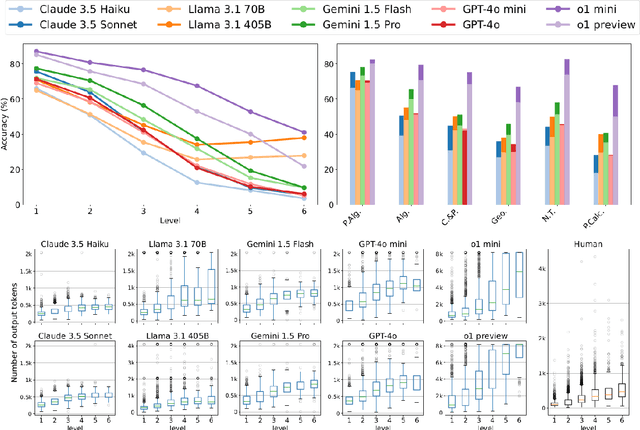
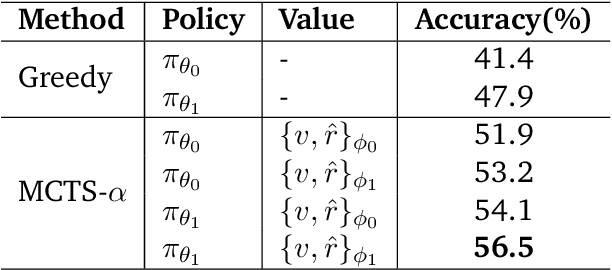
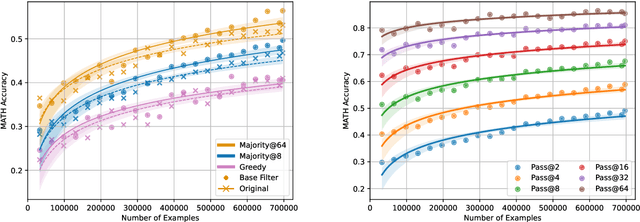
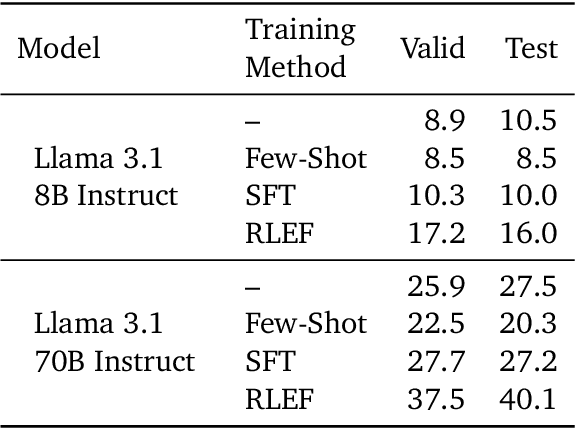
Abstract:We propose a novel framework, Meta Chain-of-Thought (Meta-CoT), which extends traditional Chain-of-Thought (CoT) by explicitly modeling the underlying reasoning required to arrive at a particular CoT. We present empirical evidence from state-of-the-art models exhibiting behaviors consistent with in-context search, and explore methods for producing Meta-CoT via process supervision, synthetic data generation, and search algorithms. Finally, we outline a concrete pipeline for training a model to produce Meta-CoTs, incorporating instruction tuning with linearized search traces and reinforcement learning post-training. Finally, we discuss open research questions, including scaling laws, verifier roles, and the potential for discovering novel reasoning algorithms. This work provides a theoretical and practical roadmap to enable Meta-CoT in LLMs, paving the way for more powerful and human-like reasoning in artificial intelligence.
 Add to Chrome
Add to Chrome Add to Firefox
Add to Firefox Add to Edge
Add to Edge